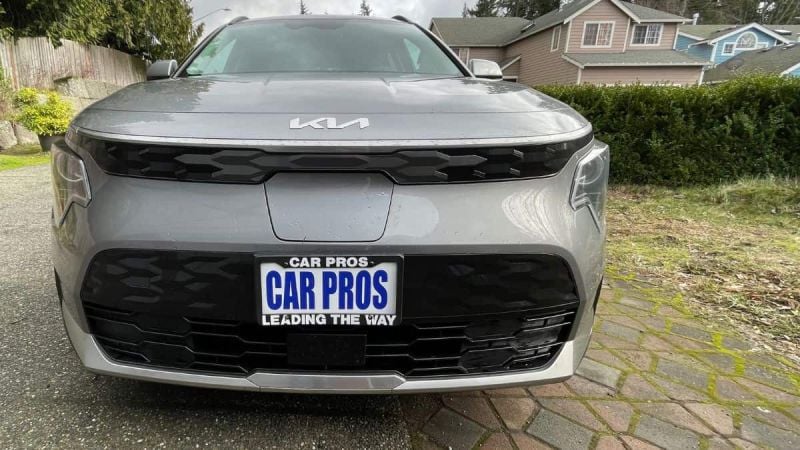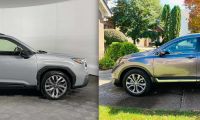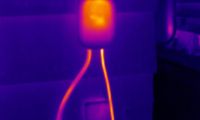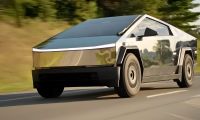There are at least half a dozen or so other electric vehicles (depending on how you count them) that one could buy in the U.S. for less than $40,000 MSRP, before any incentives, that have features comparable to the Niro (range in particular). Of course there are various incentives from federal, state and local sources that can lower the cost of some of these EVs, not all trims will cost under $40k, and dealers may charge markups or add on additional features that change prices as well. I am also using the base model prices listed below, and if one were to choose better equipped trims and or add options, the prices would rise for each accordingly. All that is just to say the $40k limit is somewhat loose.
The other EVs on sale in the U.S. with starting prices under $40k include: the Chevy Bolt ($26,500, 259 mile range) and Bolt EUV ($27,800, 247 mile range), the forthcoming Chevy Equinox EV (estimated at $30,000, due in the fall, 250 mile range), the Nissan LEAF ($36,040 for the SV Plus version with 212 miles of range), the Hyundai Kona ($33,550, 258 mile range), the Volkswagen ID.4 ($38,995, 209 mile range), and the forthcoming Fisker Ocean ($37,499, 250 mile range). The Niro EV starts at $39,550 (253 mile range).
There are many features we could compare between all these lower priced EVs, but besides price and range on a full charge, recharging speeds are perhaps the most important feature. Chevy’s offerings, and the two Bolt models specifically, are the lowest priced EVs on sale in the U.S. today and both have around 250 miles of range. However, they are also the slowest charging EVs in this group which could be a major detractor for a potential buyer. The Bolts’ level 3, 480V charging capacity is only 55kW. This is the type of charging one would most likely seek out when driving longer than the maximum range of a single charge. The Niro, by comparison, can charge at 85kW on 480V. The other EVs listed here can all level 3 charge from between 77kW (Hyundai Kona) and 150kW (Fisker Ocean). This means the Niro can only charge at 480V faster than the Bolts and the Kona. The others are all faster, though none of them is nearly as fast as more expensive EVs that can charge at 170 - 350kW.
As I mentioned in my previous article on the Niro EV though, “fast” charging at 480V is quite possibly less important for all the EVs on this end of the price spectrum (not that it is unimportant though). These EVs are not really ideal for long, cross country road trips (well, not without fairly long stops for recharging of around 45 - 90+ minutes). The Fisker and VW choices do have the fastest 480V charging capability of this bunch, so if you are planning to buy one of these EVs and intend to take more than an occasional 200+ mile drive, you might be a little more satisfied with them compared to the others. Typically though, as with most EVs, the charging rate that matters on a day to day basis is the level 2 240V charging rate one might have access to at home. Here the Niro EV is among the faster charging EVs under $40k at 11kW maximum. The LEAF (6.6kW) and Kona (7.2kW) charge slower. The Niro, Bolts, ID.4, and Equinox can all charge at 11kW or better (and the Equinox, in the far more expensive top trim only, apparently will have an option to charge at up to 19.2kW). The larger the number, the faster the EVs can recharge. To get the maximum rate requires an outlet and charging equipment capable of delivering the maximum kW each EV can take which may require expensive upgrades to your electrical panel or home wiring if you are trying to set up for the fastest possible charging arrangement. It is worth pointing out that the Bolts can only charge at 7.7kW max with the charging unit provided by Chevy; you need a 60amp or greater outlet and a charging unit that can deliver 11 kW or more, otherwise. The real difference, assuming the maximum kW delivery is available, is that the 11kW capable EVs can recharge 30-40+% faster than the slower charging EVs. When we are talking about level 2 charging though, even at 19.2kW, we are talking about overnight (or multiple hours at least) of charging to get from near empty to 100% state of charge if that’s what you need. Yet, because level 2 charging is the most ubiquitous, and can often be installed at home, it may well be the case that one would want to charge faster at home or while at public 240V chargers in order to be ready for the next errand or trip sooner (and possibly to pay less for the top off since many public chargers bill on an hourly or by minute basis rather than on a per kWh basis). Slower charging EVs, or EVs charging on only 110V “trickle chargers”, may not be able to get a full charge overnight or meaningful range during an hour or two stop to charge while having a meal, shopping, etc.
Are there other features you’d like me to compare the Niro to its closest competitors to? If so, please feel free to call them out in the comment section below.
Image courtesy of Justin Hart.
Justin Hart has owned and driven electric vehicles for over 15 years, including a first generation Nissan LEAF, second generation Chevy Volt, Tesla Model 3, an electric bicycle and most recently a Kia Sorento PHEV. He is also an avid SUP rider, poet, photographer and wine lover. He enjoys taking long EV and PHEV road trips to beautiful and serene places with the people he loves. Follow Justin on Twitter for daily KIA EV news coverage.












